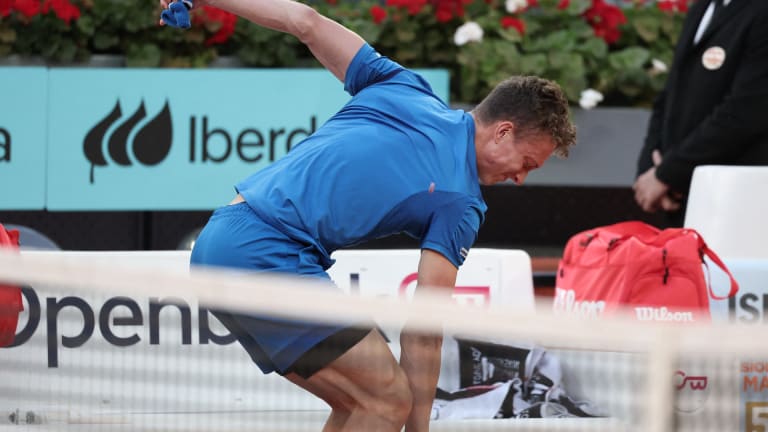Rome, Italy
Has tennis outgrown a long season on clay?
By May 10, 2024Rome, Italy
Carlos Alcaraz didn't call Jannik Sinner during Italian's ban, won't tire of praising "amazing" colleague
By May 19, 2025Rome, Italy
Carlos Alcaraz beat Jannik Sinner in a chess-like two sets to win Rome, then offered him a very public welcome back
By May 18, 2025Rome, Italy
Carlos Alcaraz snaps Jannik Sinner's 26-match winning streak, wins Rome title
By May 18, 2025Rome, Italy
Italian tennis and padel president want to make Rome a fifth Grand Slam
By May 18, 2025Rome, Italy
Jannik Sinner vs. Carlos Alcaraz: Where to watch their Rome final, preview and pick
By May 17, 2025Rome, Italy
Jannik Sinner took “a straight punch to my face” from Tommy Paul, then punched his ticket to the Rome final
By May 16, 2025Rome, Italy
Coco Gauff vs. Jasmine Paolini: Where to watch their Rome final, preview and pick
By May 16, 2025Rome, Italy
Carlos Alcaraz advances to first Rome final, bids for seventh Masters 1000 title
By May 16, 2025Rome, Italy
Jannik Sinner vs. Tommy Paul: Where to watch their Rome semifinal, preview and pick
By May 16, 2025Has tennis outgrown a long season on clay?
Expansion of tune-up tournaments and lack of uniformity are having repercussions on the players.
Published May 10, 2024
Advertising

Andrey Rublev emerged from the injury-ravaged Madrid Masters as its champion, though even he didn't prevail unscathed.
© Getty Images
Advertising
Advertising
Advertising

Jiri Lehecka breaks and kicks racquet after injury cuts his Madrid semiifnal short